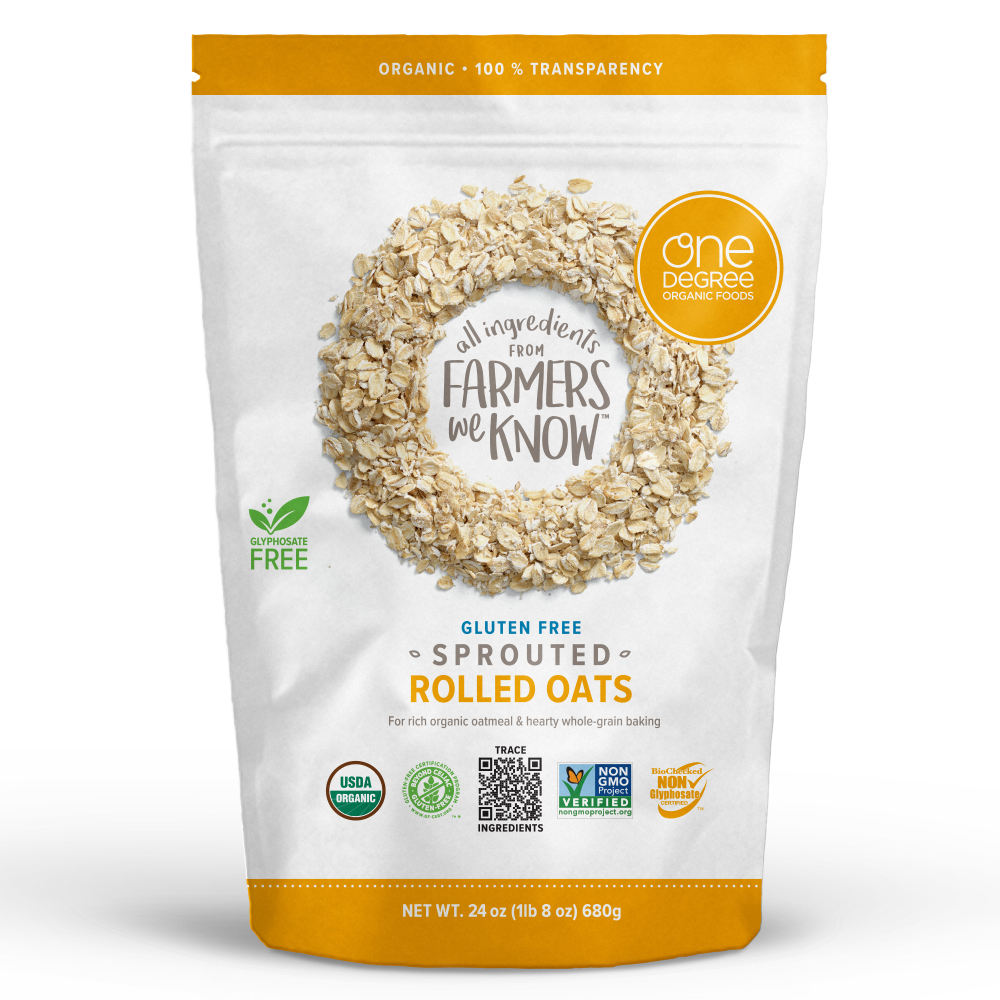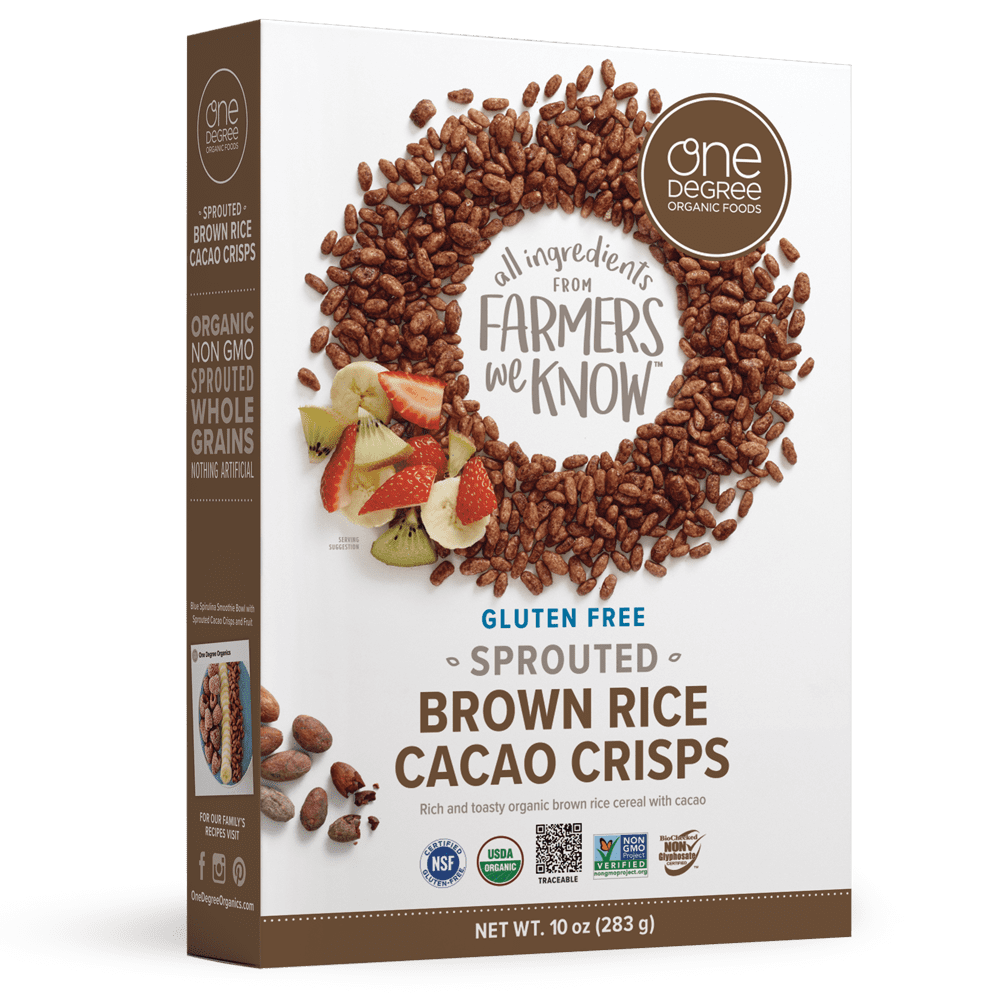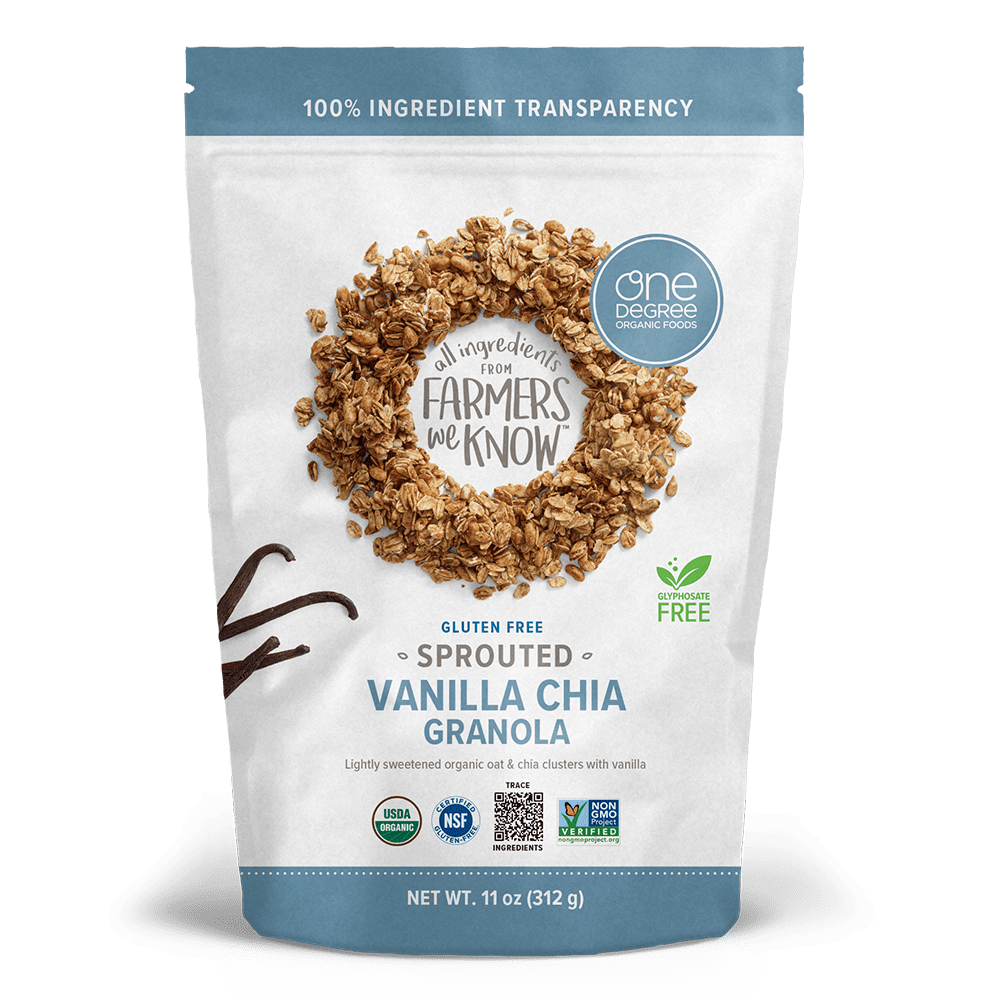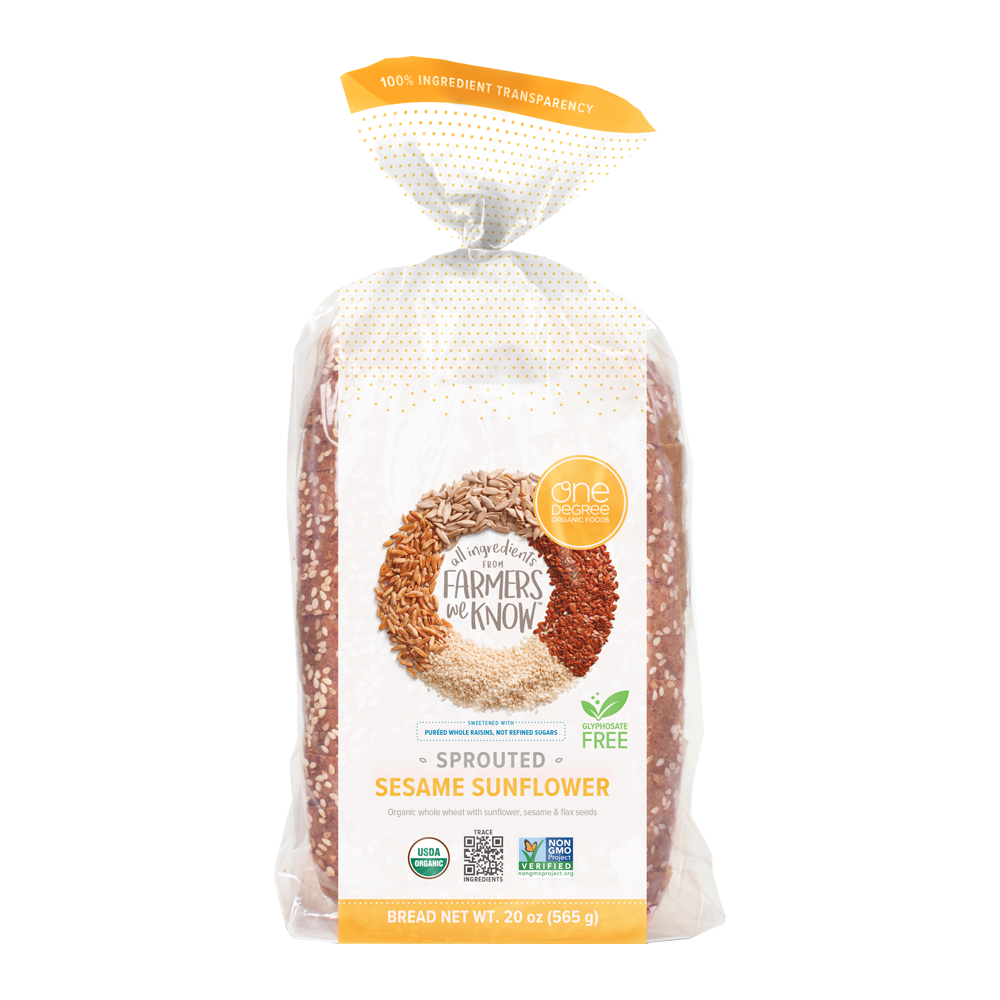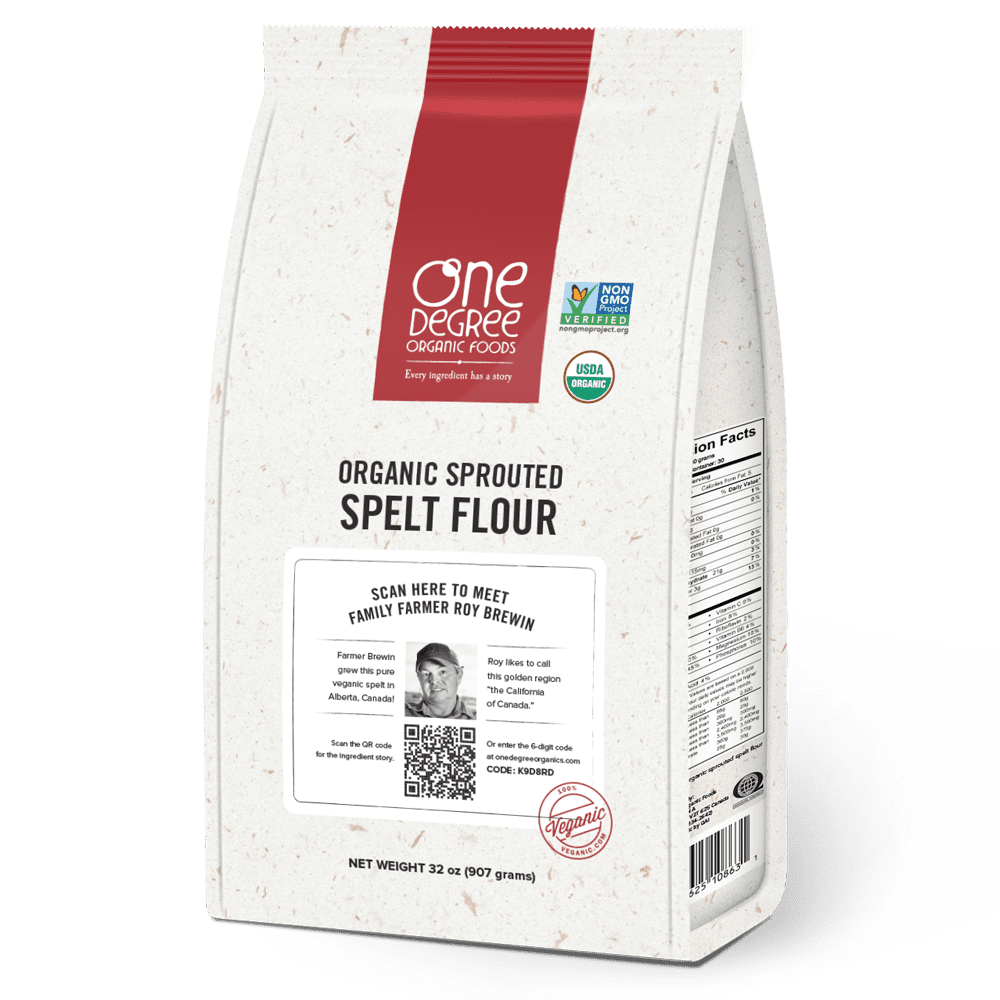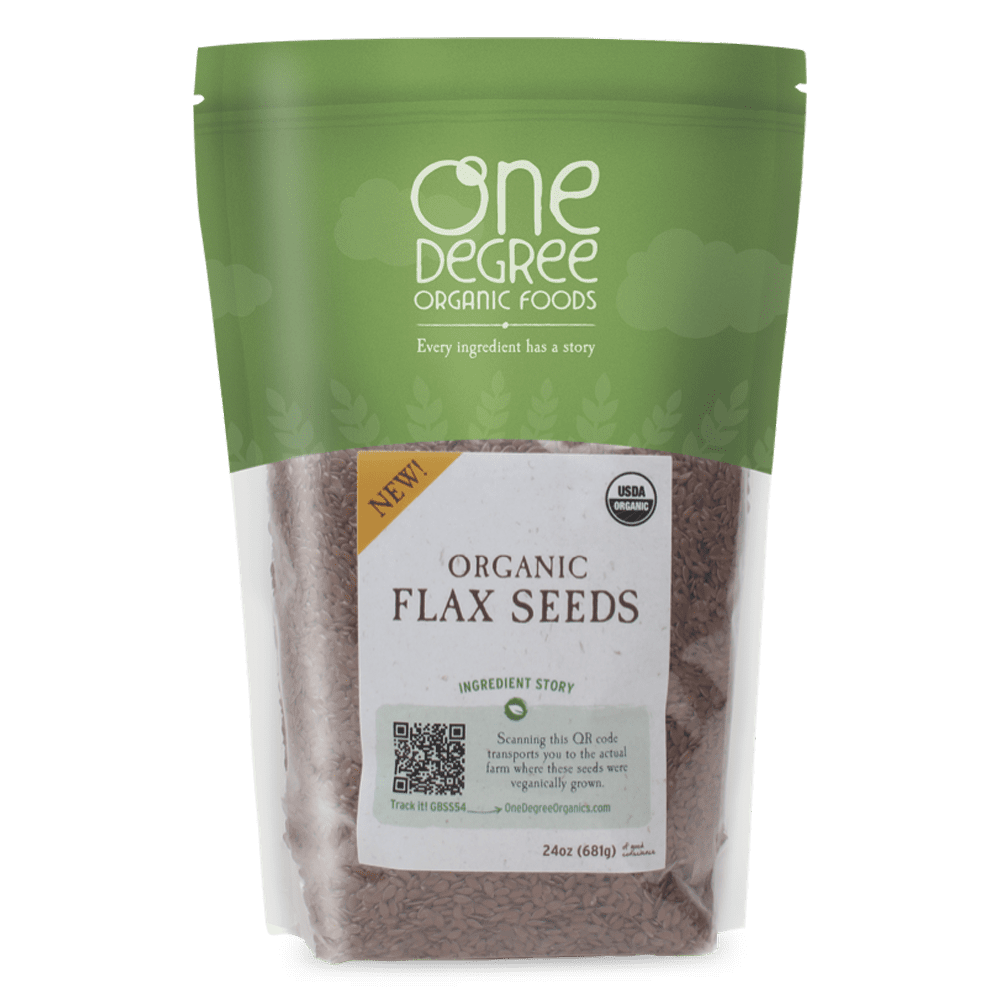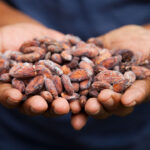Sprouted Grains: The Benefits of Sprouting—Everything You Need to Know
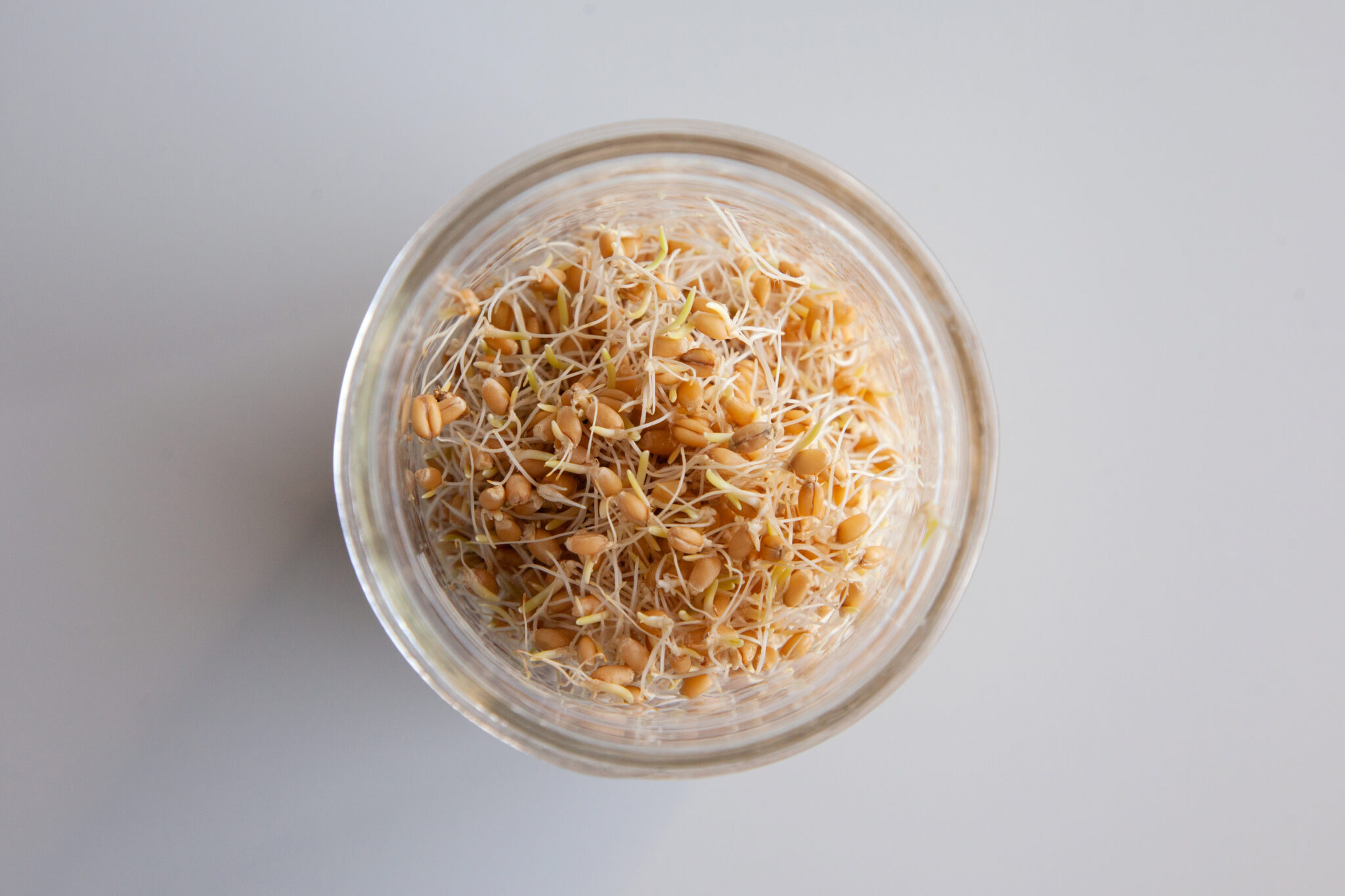
What is Sprouting and Why Does it Matter?
What are Sprouted Grains?
Every whole grain is a sleeping seed waiting for the right conditions to come to life—a little warmth and water are all it needs to wake up and grow!
From wheat to oats, from rice to maize, sprouted grains are just seeds at the beginning of their journey to becoming a plant. But what happens in a sprouting grain’s first few hours and days turns a humble little seed into a marvel of whole grain nutrition.
Read on to find out why (almost) every whole grain we use at One Degree is sprouted.
The Benefits of Sprouting
What are the Benefits of Sprouted Grains?
All the nutrition a plant requires to begin its life is stored inside its seeds. Mother Nature packs protein, starch, fat, and enzymes into a protective case to give seeds their best shot at survival.
When a grain sprouts, those enzymes activate and begin to turn the seed’s stored nutrients into more usable forms.
And the same process that makes that stored nutrition easier for the seed to use also makes it easier for people to use. Sprouted whole grains are more nutritious and easier to digest. And they taste better, too!
Sprouted Grains Are More Nutritious
Birds and animals (including humans!) are keen to make a meal out of grains, so Mother Nature gives seeds some extra defenses to discourage such snacking (and ensure some seeds survive to become next season’s plants).
Those defenses—compounds like phytates, trypsin inhibitors, tannins, and (in some seeds) saponins—are not just bitter. Scientists call them antinutrients because they make it hard for humans to digest whole grains without extensive grinding or cooking.
And because they stop us from being able to access a lot of the nutrition whole grains contain1.
Sprouting breaks down antinutrients in whole grains, increasing the bioavailabilty of vitamins and minerals like zinc, iron, magnesium, phosphorous, and B vitamins2, so your body can absorb them.
In addition to breaking down antinutrients, sprouting also increases the amount of certain nutrients in whole grains—including antioxidant vitamins C and E, beta carotene, and polyphenol content, too1,3.
An important note:
Which vitamins and antioxidants increase—and by how much—is highly dependent on the type of grain and how long it is sprouted. Some nutrients increase more the longer a grain is sprouted, while others increase with shorter sprout times, then decrease significantly beyond a certain point2.
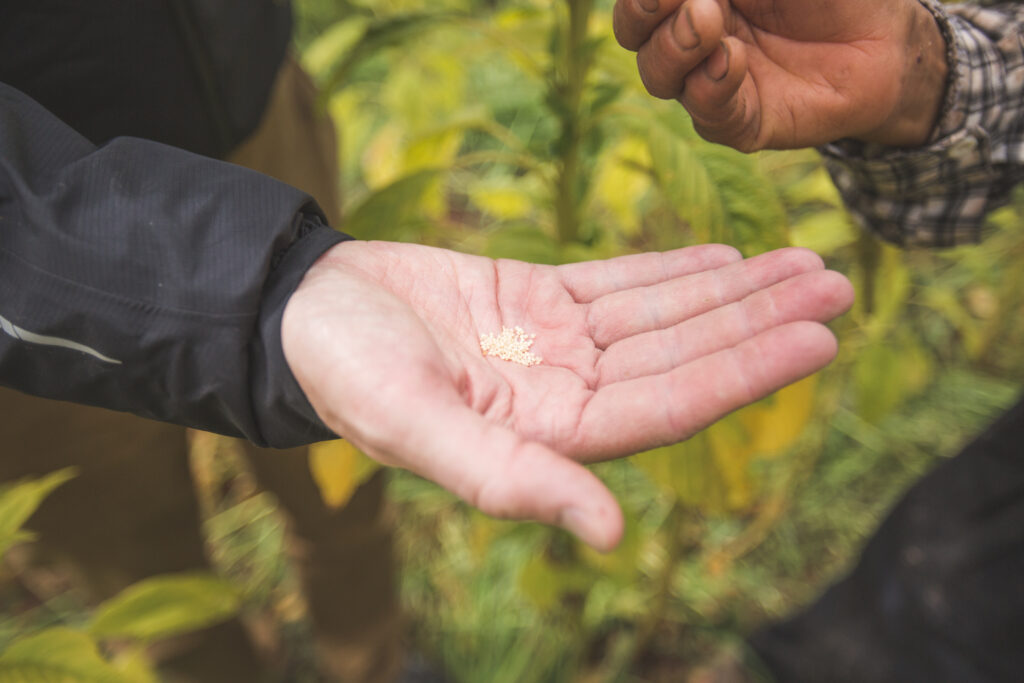
Sprouted Grains Are Easier to Digest
Research suggests that wheat sprouted in conditions similar to the proprietary methods we have developed at One Degree for our sprouted whole grains and sprouted whole wheat flour is more digestible than unsprouted wheat. In sprouted wheat, in vitro starch digestibly improves by about 15%, while in vitro protein digestibility improves by about 10%4.
Why? Sprouting activates endogenous enzymes that are dormant in unsprouted grains and seeds.
Once activated, enzymes like amylase (which breaks down starches) change the structure of starch molecules in sprouted wheat into simple sugars like oligosaccharides, while protease (an enzyme that breaks down protein) releases peptides and free amino acids.
Together, endogenous enzymes make the starches and proteins in whole wheat easier to digest overall4.
In addition to the enzymatic changes that make starches and proteins in sprouted wheat easier to digest, gluten is another protein that can be broken down by protease. Some people find sprouted grains easier to digest than unsprouted ones in part because sprouting reduces gluten in wheat5.
This reduced gluten does not make sprouted wheat safe for those with celiac disease—because the gluten in sprouted wheat is still well above the <20 PPM threshold considered safe for celiacs—but it may explain why some people have a more positive experience with products made from sprouted grains.
More studies in healthy people are needed, but research suggests that although these enzymes convert starches in sprouted whole grains into simpler sugars, sprouted whole grains may have a lower impact on glycemic response than non-sprouted grains6.
Sprouting also changes the total amount of fiber in whole grains—and the type of fiber, too (soluble and insoluble fiber). This may be why the prebiotic properties of the fiber in sprouted whole grain wheat improve (which also helps to support the friendly bacteria in your digestive system)7.
Sprouted Grains Taste Better
The nutritional and digestive benefits of sprouting are impressive, but that is not the only good news about sprouted whole grains. The same natural processes that break down antinutrients and make sprouted whole grains easier to digest also make them taste better.
As those enzymes break down starches into simpler sugars, sprouted whole grains become a little bit sweeter. And this starch-to-simpler-sugars transformation also means breads and baked goods made from sprouted grains and sprouted whole grain flours caramelize better than those made from conventional, unsprouted ones—so you get beautiful browning and depth of flavor in your crusts and cookies, too8.
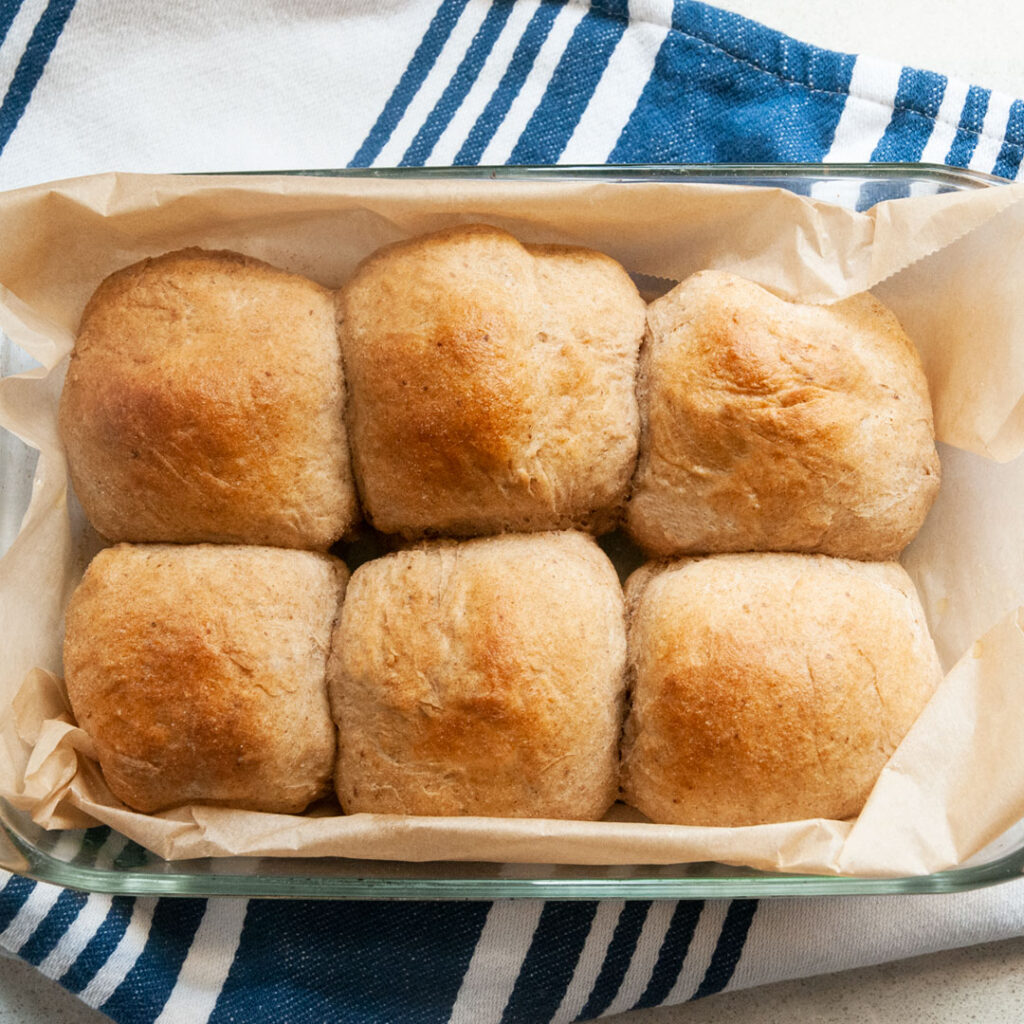
Sprouting tempers bitterness of tannins, saponins, and other antinutrients in grains. And it changes the natural compounds like flavonoids and phenols that give foods flavor, so sprouted grains and seeds have a more complex flavor profile than their unsprouted counterparts8.
And as those endogenous enzymes break down the proteins, starches, and fiber, sprouting makes hard-hulled whole grains and seeds more tender, too.
How Sprouting Brings Out the Best in Our Favorite Grains
Sprouting Brings Out the Best in Our Favorite Whole Grains
From whole grain oats to whole wheat, from brown rice to non-GMO corn, sprouting makes all our favorite whole grains better.
In addition to the benefits sprouting gives to whole grains in general, what changes—and to what degree—depends on the type of grain, sprouting conditions, and how long it is sprouted for.
Through over 30 years of experience sprouting whole grains, we have developed our own unique and proprietary methods for sprouting each of the whole grains we use in each of our products to bring out their best.
Here is what the body of scientific evidence has to say about how sprouting makes some of our favorite whole grains better.
Note: a significant volume of scientific research on sprouted grains is based on much longer sprout times than we use at One Degree Organics. Although our sprouting methods are proprietary and tailored to each specific grain and sprouted grain product we make, staying true to our commitment to transparency means not overstating what the body of evidence supports. That is why we have limited what you will read here about the benefits of sprouting to what is supported by studies with sprouting conditions that are within a fair and realistic range of what we use at One Degree.
How Are Sprouted Oats Better?
Whole grain oats—and all the cholesterol-lowering, heart-healthy, beta-glucan oat fiber they bring to the breakfast table are already worth celebrating9.
Compared to other grains, oats are naturally higher in protein and healthy fatty acids. Raw oats are lower in phytic acid than most grains, too10. And they are universally recognized as a high-fiber food.
But sprouting can make this good-for-you grain even better.
How? Sprouting increases the protein6 and free amino acids in oats2. Although lower in phytates to begin with, sprouting oats for 24 hours breaks down antinutrient phytates by 13 to 20%2 to improve the bioavailabilty of vitamins and nutrients. In addition, sprouted oats are higher in magnesium11 and GABA12 than raw oats.
Although longer germination times show soluble fiber breaks down12, in oats sprouted for less than 24 hours all that heart-healthy soluble dietary fiber remains—and digestion-friendly insoluble fiber increases6, too.
And when it comes to starch, similar short sprout times reduce starch content without increasing free sugars (where longer sprout times increase free sugars)10.
Emerging research suggests controlled sprouting may reduce the glycemic impact of oats due to a combination of these changes and the increase in total phenolic compounds (potential antioxidants found in plant-based foods).13
How is Sprouted Wheat Better?
Across multiple varieties of wheat, studies consistently show one thing: sprouting for 24 hours or more increases total phenolics and antioxidant capacity of wheat14,15,16—including antioxidant vitamins A, C, and E.
As with other whole grains, enzymes activated by sprouting improve the digestibility of wheat by breaking down starch and proteins. Total free amino acids (the building blocks of protein) in sprouted wheat are significantly higher than in unsprouted wheat15.
An example? Although a longer germination time of 96 hours yields an astonishing 9-fold increase in the essential amino acid gamma-aminobutyric acid (GABA)*, even a shorter 24-hour germination time increases GABA in wheat by an impressive 65%.14
Starch, and protein are not the only macronutrient that improves in sprouted wheat—free and total lipids (fats) increase with sprouting, too15. And the micronutrient benefits are not limited to antioxidant vitamins and compounds, either. Sprouted wheat also has a higher folate content than non-sprouted whole grain wheat17.
How is Sprouted Brown Rice Better?
Sprouting bestows several well-documented improvements to whole grain brown rice. And a more enjoyable texture and flavor that helps overcome some of the things people don’t always love about regular brown rice is just the start of this sprouted whole grain’s story.
Often called germinated brown rice (GBR to scientists, or GABA rice to serious fans), sprouted brown rice has become so popular, many smart rice cookers now come with setting for it.
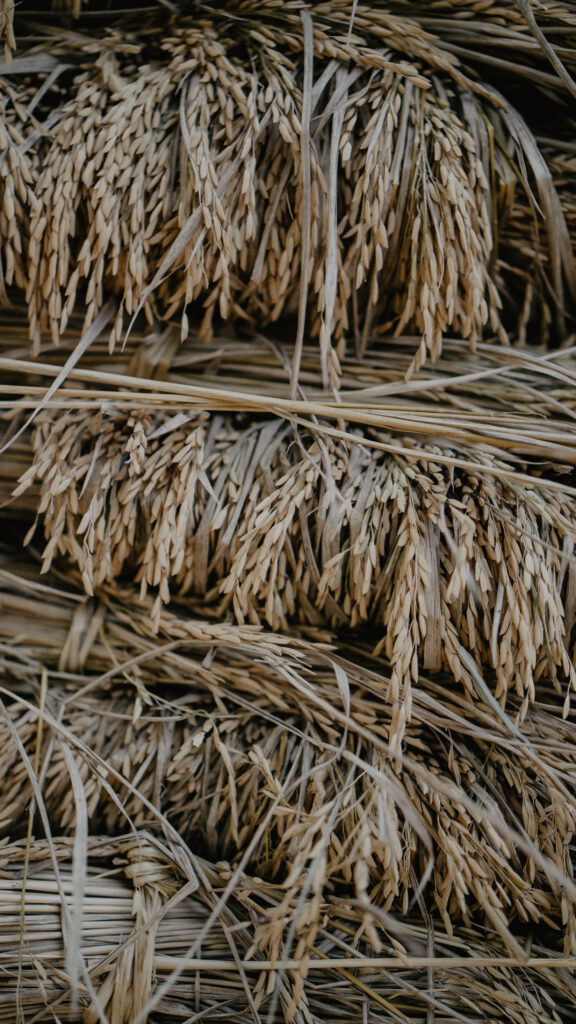
As with other grains, sprouting improves the digestibility of brown rice, and increases the quantity and bioavailability of certain vitamins, minerals, antioxidants, micro- and phytonutrients. But what interests many researchers is how sprouting increases gamma-aminobutyric acid (GABA) in brown rice—and what that might mean for human health18*.
Germinated brown rice has been studied extensively as a possible way to help manage everything from high cholesterol to blood glucose—simply by swapping sprouted whole grain brown rice in place of conventional white rice in cultures where rice is the staple grain19.
More research is needed before science can tell us whether the health benefits of sprouted brown rice are due to a specific nutrient like GABA, a combination of nutrients, or simply because germinated brown rice tastes better—and better-tasting brown rice encourages people to eat more healthy whole grains in place of refined ones. (And enjoy all the well-established health benefits that come with making at least half your grains whole!)
(*GABA is known as a main inhibitory neurotransmitter that plays a key role in the central nervous system18. As such, GABA is linked to healthy brain and neurological function, sleep, and stress. But it is not yet known to what degree germinated brown rice and other dietary sources of GABA could influence these functions).
How Sprouting Makes One Degree Products Special
From our oats to our granolas and cereals, to our flours, breads, and seeds, practically every whole grain we use at One Degree is sprouted. That means you have many ways to get all the goodness of certified organic sprouted whole grains any meal of the day!
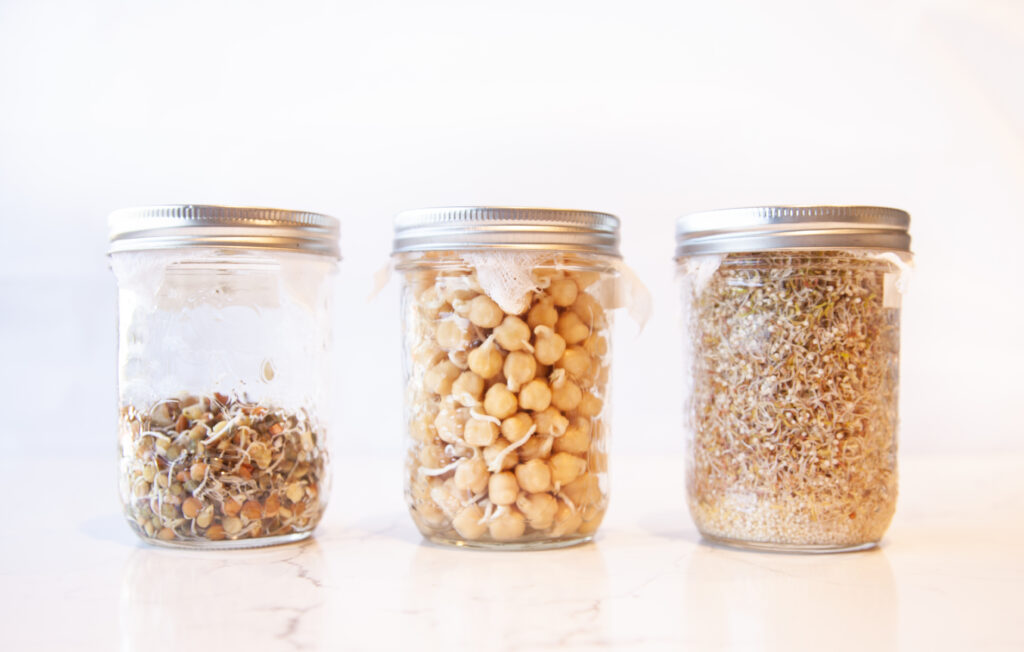
Sprouted Oats, Instant Oatmeals, and Granolas
Whether you enjoy a hot, sprouted oatmeal breakfast made from scratch from our steel cut oats, grab an oatmeal cookie baked with our rolled oats, or reach for the just-add-hot-water convenience of our sprouted instant oatmeals, any morning is a good morning for a hearty, healthy serving of One Degree Organics oats.
Non-GMO and glyphosate-free, all the organic oats we use to make our gluten-free Sprouted Rolled Oats, Steel Cut Oats, Quick Oats, Sprouted Granolas, and Sprouted Instant Oatmeals come from family farms in Canada. So you can feel just as good about where our oats came from and how they were grown as you will about the extra nutrition and digestibility sprouted oats bring to your bowl.
You will love the wholesome versatility of our collection of sprouted oats for baking and in recipes from breakfast to breads to dessert. And you will appreciate the speed and snackability our granolas and instant oatmeals add to your day.
Sprouted Cereals
Cereal fans of all ages get an upgrade when they pour One Degree Organics sprouted cereals in their breakfast bowl. Gluten-free and lightly sweetened, our organic cereals range from plain and cacao Sprouted Brown Rice Crisps, Sprouted Ancient Maize Flakes, and Sprouted Corn Flakes to three varieties of classic Sprouted Oat O’s.
When you fill your spoon with our non-GMO, glyphosate-free cereals, you get all the nutrition and digestibility benefits of sprouted whole grains like organic corn, maize, oats, brown rice, and amaranth. And our Sprouted Oat O’s include sprouted garbanzo beans, too.
As with grains, sprouting reduces antinutrient phytates and tannins in legumes like garbanzos—so you get more of the nutrition from this protein-packed ingredient!20 (and you have one more reason to reach for a box of better-for-you One Degree Organics sprouted cereal in the morning!)
Sprouted Flours
On top of enhanced nutrition and easy digestibility, sprouted whole grain flours bring remarkable flavor and texture to breads, cookies, cakes, and crusts.
One Degree Organics sprouted flours are made with only one whole grain ingredient, finely milled with care. Fans tell us time and time again how much they love the light, silky feel of our sprouted flours—and the exceptional results they get when they bake with it.
But there is more to the sprouted flour story than the raves of happy home bakers. Research shows that sprouted flours give higher loaf volume and better texture to bread, higher elasticity to pasta, and make better whole wheat tortillas, too16.
From our popular organic Sprouted Whole Wheat Flour to our , our organic sprouted flours are a fine addition to your favorite recipes. And using them is easy—simply swap them in anywhere you would use other whole grain flours. (Or explore our Family Recipes for tried-and-true sprouted flour takes on everything from artisan bread and thin crust pizza to brownies and sticky buns!)
Learn more about how One Degree’s sprouted whole grain flours are different—and why bakers love them on our [name of flours page]. <internal link>
Sprouted Breads
Bread made from sprouted flour gets all the nutrition and digestibility benefits of sprouted whole grains—and then some. Because of the ways sprouting transforms whole grain flour, breads baked with it rise better, and have a more tender crumb than conventional breads.
Sprouting brings out the natural sweetness in grains, so breads baked with sprouted whole grain wheat flour require less sugar, have a richer crust—and make better toast because of the Maillard reaction8,16.
One Degree Organics Sprouted Breads are delicately sweetened with whole puréed raisins And on top of the tender crumb from sprouted flour, they owe some of their lighter, softer texture to nutrient-rich Camu Camu powder. High in vitamin C, Camu Camu is a superfood ingredient that acts as a natural softener in baked goods, so you can feel good about every fluffy slice.
And to give you one more reason to bite into a tender slice of sprouted goodness, our Sprouted Lentil Grain Bread includes organic sprouted lentil flour. Just like sprouted grains and legumes, sprouted pulses like lentils have lower antinutrient phytates, tannins, and oxylates, are higher in protein, and have better protein and digestibility11.
Now that you know all the wonderful ways sprouting makes whole grains, legumes, pulses—and all the products we make with them—better, we hope you have one more reason to fall in love with One Degree Organics!
Scroll down to subscribe to our monthly newsletter to learn more about the organic ingredients we use, meet the farmers who grew them, and get inspired with healthy recipes and wholesome stories, too. And follow us on Facebook, Instagram, and Pinterest, too!
References
- Benincasa P., Falcinelli B., Lutts S., Stagnari F., Galieni A.. Sprouted Grains: A Comprehensive Review. Nutrients. 2019; 11(2):421. Available from: https://www.mdpi.com/2072-6643/11/2/421/htm, accessed December 4, 2019.
- Lemmens, E., Moroni, A., Pagand, J., Heiraut, P., Ritala, A., Karlen, Y., Le, K.A., Van den Broeck, H., Brouns, F., De Brier, N., Delcour, J., Impact of Cereal Seed Sprouting on Its Nutritional and Technological Properties: A Critical Review. Comprehensive Reviews in Food Science and Food Safety, 12 Dec. 2018. Available from: https://onlinelibrary.wiley.com/doi/full/10.1111/1541-4337.12414, accessed December 4, 2019.
- Žilić, S., Basić, Z., Šukalović, V., Maksimović, V., Jankovic, M., Filipović, M., Can The Sprouting Process Applied To Wheat Improve The Contents Of Vitamins And Phenolic Compounds And Antioxidant Capacity Of The Flour? International Journal of Food Science & Technology. 49. 1040-1047 10.1111/ijfs.12397, 2014. Available from: https://www.researchgate.net/publication/260802955_Can_the_sprouting_process_applied_to_wheat_improve_the_contents_of_vitamins_and_phenolic_compounds_and_antioxidant_capacity_of_the_flour, accessed June 17, 2020.
- Singh, A., Bobade, H., Sharma, S. et al., Enhancement of Digestibility of Nutrients (In vitro), Antioxidant Potential and Functional Attributes of Wheat Flour Through Grain Germination. Plant Foods for Human Nutrition 76, 118–124 (2021), 26 February 2021. Available from: https://link.springer.com/content/pdf/10.1007/s11130-021-00881-z.pdf, accessed July 13, 2021
- Kucek, L.K., Veenstra, L.D., Amnuaycheewa, P. and Sorrells, M.E., A Grounded Guide to Gluten: How Modern Genotypes and Processing Impact Wheat Sensitivity. Comprehensive Reviews in Food Science and Food Safety, 14: 285-302, 2015. Available from: https://onlinelibrary.wiley.com/doi/full/10.1111/1541-4337.12129, accessed August 11, 2020.
- Nelson, K., Stojanovska, L., Vasiljevic, T., Mathai, M., Germinated Grains: A Superior Whole Grain Functional Food? Canadian Journal of Physiology and Pharmacology, 2013, 91:429-441. Available from: https://www.nrcresearchpress.com/doi/full/10.1139/cjpp-2012-0351, accessed December 4, 2019.
- Jribi, S., Antal, O.T., Fustos, Z., Papai, G., Naar, Z., Kheriji, O, Debbabi, H., Influence Of Sprouting Bioprocess On Durum Wheat (Triticum Durum) Prebiotic Properties. Options Méditerranéennes, A 124, 2020 – Research and innovation as tools for sustainable agriculture, food and nutrition security. MEDFORUM 2018. Bari, Italy, September 18-20 2018, Extended abstracts and papers. Available from: https://om.ciheam.org/om/pdf/a124/00007806.pdf, accessed August 11, 2020.
- Finnie, S., Brovelli, V., & Nelson, D., Sprouted grains as a food ingredient. In Sprouted Grains: Nutritional Value, Production, and Applications (pp. 113–142). AACC International via Elsevier, 2019. https://doi.org/10.1016/B978-0-12-811525-1.00006-3, accessed August 11, 2020.
- Health Canada, Oat Products and Blood Cholesterol Lowering: Summary of Assessment of a Health Claim about Oat Products and Blood Cholesterol Lowering. Government of Canada, November 2010. Available from: https://www.canada.ca/en/health-canada/services/food-nutrition/food-labelling/health-claims/assessments/products-blood-cholesterol-lowering-summary-assessment-health-claim-about-products-blood-cholesterol-lowering.html, accessed October 19, 2021.
- Tian, B., Xie, B., Shi, J. , Wua, J., Cai, Y., Xu, T., Xue, S., Deng, Q., Physicochemical changes of oat seeds during germination. Food Chemistry 119 (2010) 1195-1200, 2009. Available from: https://www.researchgate.net/publication/229190492_Physicochemical_changes_of_oat_seeds_during_germination, accessed December 4, 2019.
- Nkhata, S.G., Ayua, E., Kamau, E.H., Shingiro, J.-B., Fermentation And Germination Improve Nutritional Value Of Cereals And Legumes Through Activation Of Endogenous Enzymes. Food Science & Nutrition, 2018:6:2446-2458, September 21, 2018. Available from: https://onlinelibrary.wiley.com/doi/pdf/10.1002/fsn3.846, accessed December 4, 2019.
- Wu, F., Xueming, X., Chapter 7: Sprouted grains-based fermented products, in Sprouted Grains: Nutritional Value, Production, and Applications (Feng, H, Nemzer, B., DeVries, J., editors). AACC International, 2019. Available from: https://www.researchgate.net/profile/Qiong_Qiong_Yang/publication/328450776_Bioactive_compounds_and_beneficial_functions_of_sprouted_grains/links/5be68b7ea6fdcc3a8dcb3cc8/Bioactive-compounds-and-beneficial-functions-of-sprouted-grains.pdf, Accessed September 30, 2020.
- Zhang K, Dong R, Hu X, Ren C, Li Y. Oat-Based Foods: Chemical Constituents, Glycemic Index, and the Effect of Processing. Foods. 2021;10(6):1304. Published 2021 Jun 7. https://www.ncbi.nlm.nih.gov/pmc/articles/PMC8229445/, accessed July 12, 2021.
- Kim, M.J., Kwak, H.S., Kim, S.S., Effects of Germination on Protein, γ-Aminobutyric Acid, Phenolic Acids, and Antioxidant Capacity in Wheat. Molecules (Basel, Switzerland). 2018 Sep;23(9). Available from https://europepmc.org/backend/ptpmcrender.fcgi?accid=PMC6225431&blobtype=pdf, accessed August 11, 2020.
- Van Hung P, Maeda T, Morita N. Improvement of nutritional composition and antioxidant capacity of high-amylose wheat during germination. Journal of Food Science and Technology, 2015 Oct;52(10):6756-62. Available from https://www.ncbi.nlm.nih.gov/pmc/articles/PMC4573163/pdf/13197_2015_Article_1730.pdf, accessed September 24, 2021.
- Ding, J., Feng, H., Controlled germination for enhancing the nutritional value of sprouted grains. In Sprouted Grains: Nutritional Value, Production, and Applications (pp. 91–105). AACC International via Elsevier, 2019. https://doi.org/10.1016/B978-0-12-811525-1.00006-3, accessed August 11, 2020.
- Hefni, M., and Witthöft, C.M., Enhancement Of The Folate Content In Egyptian Pita Bread. Food & Nutrition Research vol. 56 (2012): 10.3402/fnr.v56i0.5566. Available from: https://www.ncbi.nlm.nih.gov/pmc/articles/PMC3321255/pdf/FNR-56-5566.pdf, accessed August 11, 2020.
- Ngo, D. H., & Vo, T. S., An Updated Review on Pharmaceutical Properties of Gamma-Aminobutyric Acid. Molecules, 24(15), 2678, 2019 July 24. Available from: https://www.ncbi.nlm.nih.gov/pmc/articles/PMC6696076/pdf/molecules-24-02678.pdf, accessed July 16, 2021.
- Wu, F., Xu, X., Sprouted grains-based fermented products: Germinated Brown Rice. In Sprouted Grains: Nutritional Value, Production, and Applications (pp. 145–147). AACC International via Elsevier, 2019. https://doi.org/10.1016/B978-0-12-811525-1.00006-3, accessed August 11, 2020.
- Haileslassie, H. A., Henry, C. J., & Tyler, R. T., Impact of household food processing strategies on antinutrient (phytate, tannin and polyphenol) contents of chickpeas (Cicer arietinumL.) and beans (Phaseolus vulgarisL.): a review. International Journal of Food Science & Technology, 51(9), 2016. Available from: https://ifst.onlinelibrary.wiley.com/doi/abs/10.1111/ijfs.13166, accessed October 20, 2021.
